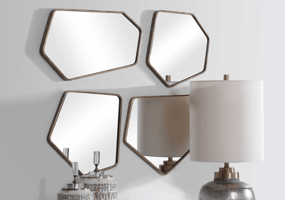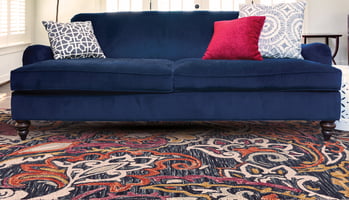Is it too cheesy to start this off with: “Mirror, mirror on the wall, tell me about the powers of...
Using the 4 Sources of Light in Your Living Room
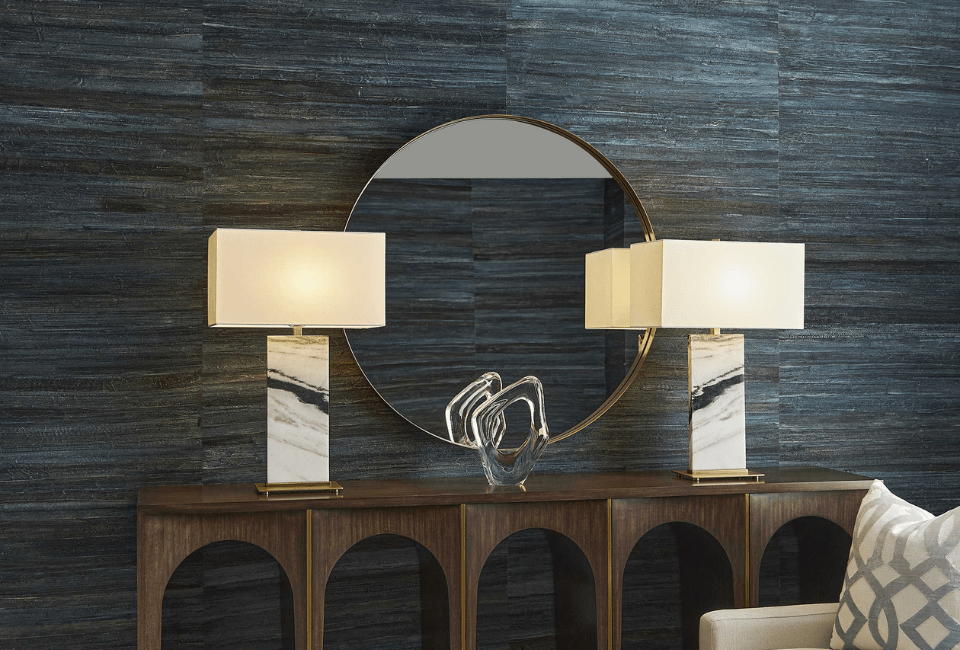 Lighting goes way beyond helping you see better, especially in your living room. Because of how often you use your living room and the many functions it can serve, you need options and layers when it comes to lighting.
Lighting goes way beyond helping you see better, especially in your living room. Because of how often you use your living room and the many functions it can serve, you need options and layers when it comes to lighting.
To ensure your living room is well-lit, the fixtures complement the overall aesthetic, and everything in between, it’s important to explore and utilize the four sources of light.
Our in-house designers at McElheran’s Furniture + Design are known as Design Guides. With over 60 years of combined experience, they offer a wealth of knowledge when it comes to designing any room – right down to the lighting.
In this article, one of our Design Guides, Shelley, will discuss the four sources of light and how to use them in your living room.
The four sources of light
Ambient lighting
As the primary source, ambient lighting evenly distributes light by providing a broad wash of it in a given space. It is also used to improve the warmth and depth of a room. Common ambient lighting fixtures shine from above, like chandeliers and pot lights.
Ambient lighting is usually on the soft and warmer side, as compared to task and accent lighting – since it’s less about fulfilling a specific need and more about the atmosphere. The light given off is meant to be inviting and helpful, and far from intense.
Ambient lighting in the living room
Ambient lighting usually comes from permanent fixtures in your home controlled by a switch. Even though this lighting is part of the room’s architecture and may not physically move, you can still control other aspects of it.
With dimmers and different types of bulbs, you can manage the colour, brightness, and overall mood of your living room.
When it comes to ambient light, Shelley stresses that you should go for bulbs with soft and warm tones, as opposed to cool or daylight tones. This is your living room we’re talking about there – a place for you to wind down and relax. Save the bright and intense lighting for the office!
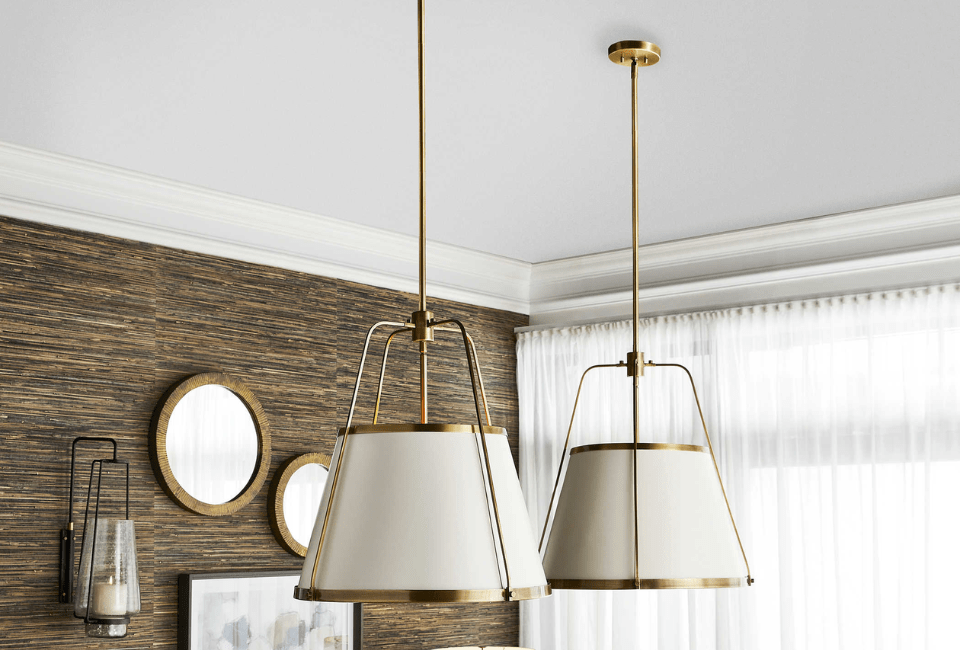
Task lighting
The purpose of task lighting is to shed ample light in areas where we perform certain duties, like reading or working. Incorporating this light source adds visibility to a concentrated area so you can focus on the task at hand.
The room's function and task lighting go hand in hand since they’re both influenced by the practicality of the space. Once you’ve determined what you’re using the room for, you can figure out what kind of task lighting you need and where to position it.
Task lighting in the living room
The most common sources for living room task lighting come from table or floor lamps. But how do you decide which kind of lamp will work best in your living room - and what size? It really depends on the kind of space you have, because you might have room for both.
You can find floor lamps that are rather slender, which are an attractive choice for small spaces or tight corners. If you have room for multiple side, end, or sofa tables, table lamps certainly make sense.
Then, it also depends on where you tend to perform your tasks – or where you’ll need the best lighting. If you like to read in the deep cushions of your sectional, a floor lamp that arches over the back of your furniture will help light the pages of your book. If you have a knitting nook in the corner of your living room, you’ll need a lamp by your knitting chair.
And, of course, you want your lamps to be appropriately sized so they’re functional and stylish in your space. For example, with a table lamp, the shade should be around eye level. That way, the item you’re looking at is illuminated, but your eyes are still protected from direct light.
Scale and proportion come into play with lamps, too. To create a cohesive look, lamps should complement the surrounding furniture and the room itself. A skinny lamp with a modern shade, for instance, would look better on top of a minimal pedestal table than a rustic, oversized end table.
Accent lighting
Accent lighting draws attention to a particular area, like an impressive art piece or the room’s architecture. It is generally brighter than ambient lighting because it’s meant to emphasize something, which also explains why accent lighting is often positioned close to its subject.
Accent lighting can also be a point of intrigue on its own, like a sculpture with a light source.
Either way, accent lighting is a great way to show off your personal taste and style.
Accent lighting in the living room
Common uses of accent lighting are spotlights, track lights, illuminated sculptures, and display floor lamps.
Recessed lighting is also an example, where the lighting source blends into its surroundings or is somewhat hidden, like lights within bookshelves or under cabinets. This type of lighting can be used to highlight accessories, décor, and other personal effects on your shelving.
Natural lighting
Natural lighting comes from, well, nature. And it can flood a room through windows or by a skylight. Depending on the time of day, you might not always have natural light coming into your home, but luckily, there are ways to amplify it and (somewhat) control it.
Natural lighting in the living room
If you’re looking to manipulate the amount of natural light coming into your living room, you can try out different layers of window coverings. Some window treatments, like blackout blinds, offer full coverage and prevent any light from coming in. Other drapery options are more sheer and translucent, allowing for some sunlight to shine into your space.
You could also open or close your blinds at any given time, depending on the amount of natural light you desire for your living room.
Now, let’s talk about mirrors and the power of using them in your space. Mirrors are a great way to amplify the light you have or make up for the lighting you don’t.
A well-positioned mirror can reflect the natural sunlight coming in and emphasize it, leaving your living room looking much brighter.
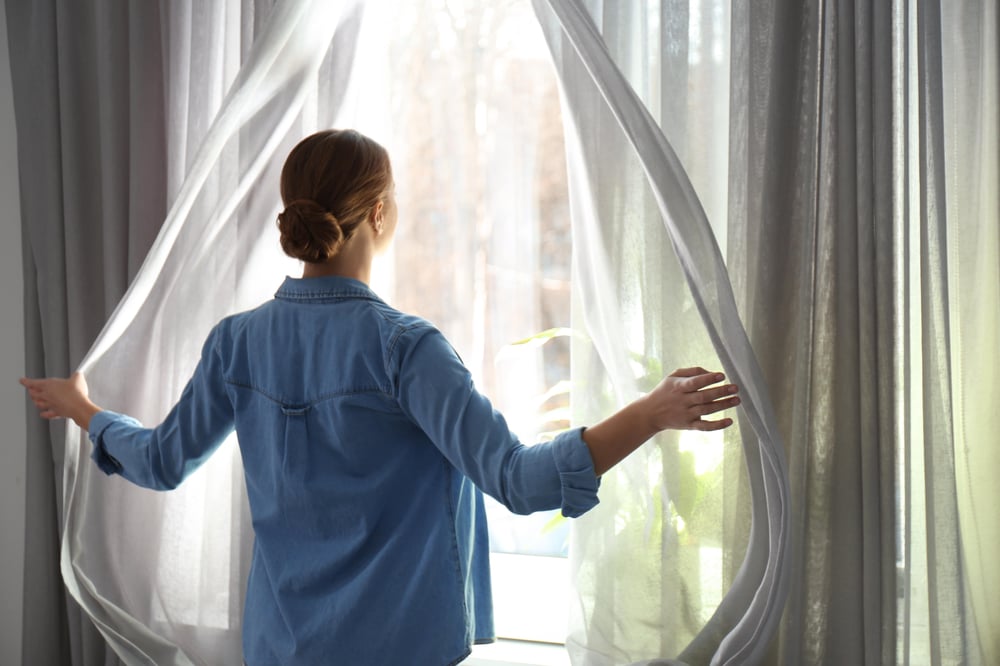 PHOTO CREDIT: New Africa/Adobe Stock
PHOTO CREDIT: New Africa/Adobe Stock
How much lighting should I use in my living room?
Probably more than you think.
Shelley notes that one of the biggest lighting mistakes she sees in living rooms is that there isn’t enough of it!
She recommends that all four sources of light should be accounted for, but that doesn't mean you have to utilize them all at once. You may not always need your task lighting, and obviously, Mother Nature is more in control of natural light than we are.
As long as you have access to ambient, task, accent, and natural lighting, you’re creating a layered, functional, and interesting lighting scheme in your space.
Is lighting important for the design of my living room?
Absolutely!
Your ambient lighting fixtures can help determine the layout of your living room. Since that type of lighting usually comes from a permanent fixture, you can work around it. And you can figure out where your task lighting (like lamps) should go once you decide where you’ll perform said tasks.
Accent lighting comes with the desire to highlight certain aspects of your space, and natural lighting, well, it kind of does its own thing. But, as mentioned, there are ways to manipulate the light coming into your space, and you can figure out how to do that with a space plan!
Space planning works with lighting, existing furniture and fixtures, adjacent rooms, dimensions… all to form a well-thought-out plan for designing your space. You can learn more by reading What is Space Planning and Why Is It Important?
And if you’re wondering how you can bring all these design elements together - while incorporating these four sources of light - drop by our showroom in Edmonton! Our Design Guides are ready to help you find the best furniture and lighting for your living room, so you can create a space you’re proud of.


-min-1.png?width=800&height=400&name=DesignButton(png)-min-1.png)
